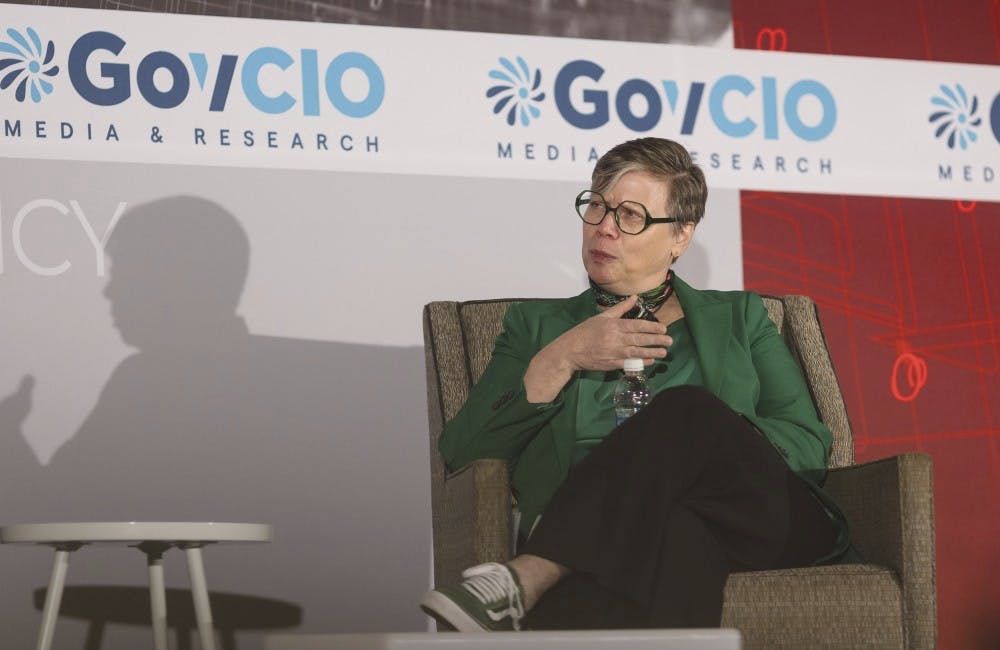Veterans Trust, Satisfcation in VA Increases to New High
Efforts to address veteran feedback and reform business lines appear to be increasing overall satisfaction with VA services.

The Department of Veterans Affairs has reported an increase in veteran satisfaction, following a campaign to address feedback and improve the delivery of agency services.
VA reported a substantial increase in veteran trust over the preceding five years — thanks to satisfaction with wait times and access to care. Agency leadership discussed these results compiled through wide-reaching surveys that incorporated feedback from millions of veterans.
“We’ve received more than 6 million different surveys from veterans about their experience. Just in the past quarter, 79% responded saying that they agree or strongly agree in the statement that ‘I trust VA’. That’s a 24% leap since 2016 and a 7% increase since 2019,” said Chief Veterans Experience Officer John Boerstler in remarks to the press that accompanied the release of the first ever publicly available VA Trust Report.
The rise in veterans trust appears to be consistent across demographics, with 80% of male veterans and 74% of women veterans now reporting they trust VA to fully address their particular care needs — a notable increase from the aggregate 55% trust across all VA customers that was tallied when surveys began in the second quarter of 2016.
Boerstler noted that 2020 represents the first time these figures have been made public, part of an agency effort to increase transparency while continuing the reform and modernization of VA services.
“Not only do we want our veterans, their families, caregivers and survivors to know that we are listening to them, we are also a public organization, and it’s our duty to be transparent about trust in our services. We also have a duty to hold ourselves accountable and responsible,” Boerstler said.
Trust and satisfaction with agency services varies somewhat across demographics, with VA representatives emphasizing that addressing the needs of underserved populations has become a priority going forward.
“This is especially valuable in order to improve access to VA care and improve outcomes, and in order to ensure equity across all communities,” Boerstler said.
Going forward, VA aims to apply human-centered design principles to its surveys to better adjust services and reach out to demographics that might report less trust in agency services or potentially be hesitant to enroll in care.
“We’ve completed some really specific and measurable human-centered design focus groups that not only glean insights, but can help us solve some of the pain points. Similarly, we’re also conducting targeted human-centered design projects on underserved populations. Be they veterans of color, Native American veterans, LGBTQ veterans, rural veterans and younger veterans who don’t access VA as frequently or don’t trust VA as much as their counterparts in other age groups,” Boerstler said.
This is a carousel with manually rotating slides. Use Next and Previous buttons to navigate or jump to a slide with the slide dots
-

NCI Uses Wearables Data to Link Exercise to Cancer Risk
NCI finds a connection between low-intensity exercise and decreased risk of cancer through data collected from wearable technology.
9m listen -

Navy Software Optimization Journey Focuses on Efficiency
DOD and DOGE collaborate on initiative to cut waste and improve technology acquisition, DON deputy CIO says.
4m read -

AI Boosts Customer Experience at Federal Contact Centers
Federal contact center leaders at DOL and VA are exploring AI's potential to drive efficiency and boost customer experience.
3m read -

President's FY2026 Budget Request Puts Big Bets on Tech
OMB proposes significant reductions for civilian agencies, but earmarks funds for AI, space exploration and energy.
3m read








